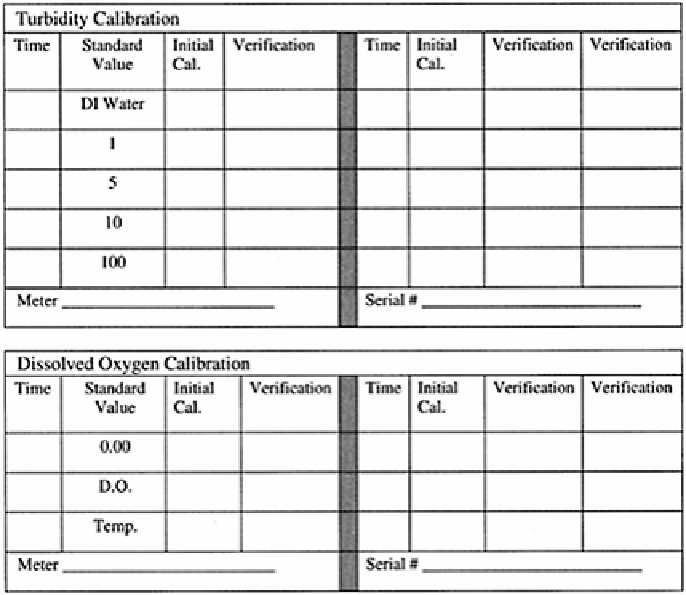Environmental Engineering Reference
In-Depth Information
be necessary before analysis.
Sample preparation can be considered to be the removal of interfering matrix
components from the sample before analysis. It might involve modification of the sample
using extraction, concentration, and/or other
steps that change the original or “raw” sample into a form that can be analyzed using
chemical or instrumental methods. For example, a liquid/ liquid separation of organic
components from a water sample and their subsequent concentration to permit trace-level
detection by an analytical method might be conducted. Another example is the chemical
decomposition of a soil or solid sample using grinding and acidic reduction to free metal
species present for analysis.
The sample preparation methods described above are used to produce the actual
sample or extract that is analyzed using selective physical or chemical methods. Physical
methods include all spectroscopic analysis (e.g., spectrometry, molecular, and atomic
spectroscopy) and chemical methods include titrations, other volumetric methods, and
precipitation reactions.
The analytical result is used for the determination of the qualitative and/or quantitative
composition and concentration of the analyte in the raw sample. After the analysis is
complete, critical consideration of the resulting data is carried out, looking for mistakes
deriving from preparation and process errors. This is followed by analysis of the raw data
for possible interferences. These may be from the method, the nature of the sample or

Search WWH ::

Custom Search